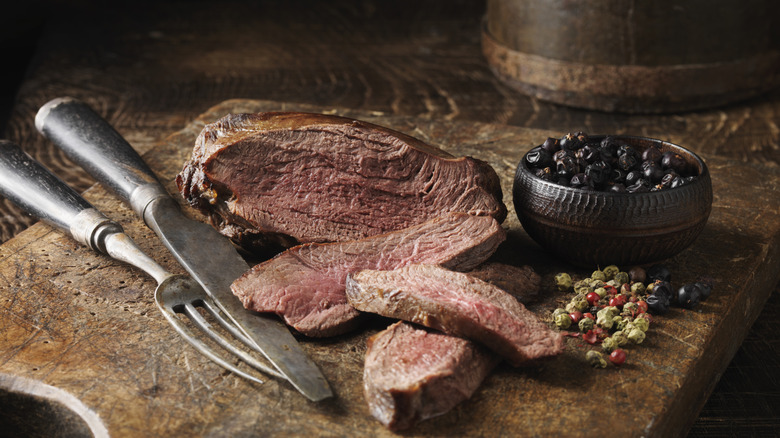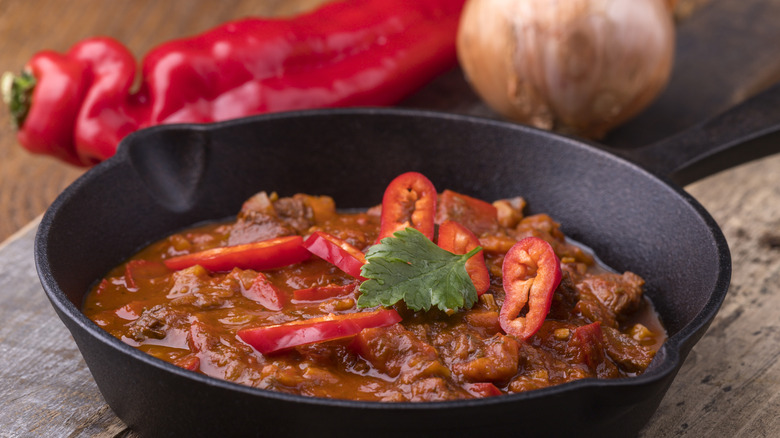How To Prepare Your Venison So It Tastes Less Gamey
Growing up in the Allegheny Mountains of Western Pennsylvania, I always looked forward to fall for two reasons: crunchy leaves, and deer-hunting season. Most years, my dad brought home an abundance of venison in a variety of forms for us to enjoy all winter, including ground meat for burgers or chili, and deer steaks for searing, stewing, and braising. My favorite was always venison jerky, which my father prepared himself, slowly drying marinated medallions of meat to flavorful perfection.
However, my mom has always been the culinary magician in the family, and she was the one who taught me the techniques for overcoming venison's gamey intensity as a main dish. The secret, she told me, was the right combination of fat, acid, and gentle heating. Venison is extremely lean and has a tendency to seize and become tough if it's heated too quickly. It can also become unpleasantly bitter. Cooked properly, on the other hand, venison becomes incredibly rich and savory.
The first step to preparing venison correctly is introducing it to an acid, like buttermilk or vinegar. The acids in a good marinade help tenderize meat and prevent it from seizing when cooked. Additional fats, such as bacon or butter, also help improve venison's texture while elevating it by bringing out its inherent earthy, lightly nutty undertones. Combine these preparation methods with a quick sear (medium is the highest you should go) or a few hours in your favorite slow cooker chili recipe to produce tender, juicy, and not-at-all-gamey tasting venison you'll remember for decades.
Preparation and flavor suggestions
Since venison loves acid and fat (my mom reminded me of this every autumn), Italian dressing makes an easy and delicious marinade option. The vinegar and oil give it a luscious texture while the herbs and seasonings soften its gamey astringency. My dad's jerky marinade included Worcestershire sauce and liquid smoke, which gave the meat a deep savoriness while keeping it from getting too tough as it dried. Notice that these suggestions all include strong, vibrant flavors, as well. Sharp, tangy ingredients counteract any potential bitterness in the venison, while emphasizing the more pleasant nuances of its flavor.
One preparation I can't get enough of is venison slowly cooked with tomatoes. This sumptuous combination almost always produces slightly sweet, earthy, and mouthwateringly tender meat. While heat from the slow cooker caramelizes the tomatoes' sugars, their acids seep into the venison to work their magic. As the venison's savory juices mingle with the tomatoes' tanginess, they create balanced, complex flavor. That's why I still crave the spicy, venison-rich chilis and hearty stews I enjoyed throughout my childhood.
Of course, we can't talk about venison without discussing fruit. Though tomatoes are technically a fruit, there are lots of sweeter options that also make great seasonings for wild meats. Apples, pears, and peaches make tasty salsas and chutneys to bring out venison's hidden depths. Dried cranberries are also very tasty. If you want a hearty, comforting treat, dress your venison chili with white cheddar and craisins; you won't be sorry.

